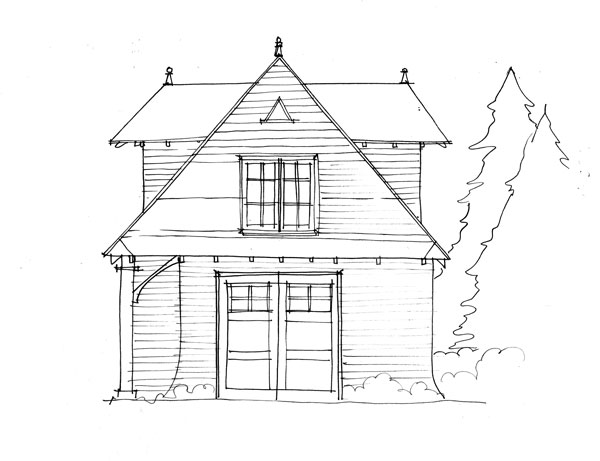The Muse Within
AIA DESIGN THEORY – July 2012
Edited by Rebecca Falzano | Photography Trent Bell
Architect Kay Stevens-Rosa on inspiration
What inspires an architect to design? What makes his or her work unique and sought after? What is it about creating that yields inspiration, and vice versa? These are the questions that Kay Stevens-Rosa of A4 Architects in Bar Harbor once worried about as a young architecture student. How would she know what to design, how to design? Now, twenty-five years later, a different set of questions informs her work: “Can I channel this stream of inspiration into a singular coherent design, and (more difficult) how can I synchronize this vision with the budget and program of my client?” Stevens-Rosa shares her musings with MH+D.
Q: How do you balance your own inspiration as an architect with your clients’ vision?
A: Like every artist, every architect has what I like to call an “inner muse.” Though our muses are rarely elevated to mythological proportions, part of the maturing of an architect is to know how to listen to the inner workings of one’s passion and then, more important, bring this to the table together with your client and their needs, the site, and the many other parameters that come into play in this very complex dance. I like to spend a lot of time with my clients before I even allow the muse to come to the table. Understanding who they are as people is important: how they like to interact with spaces, what their aesthetic leanings may be, what influences have made them who they are, and what has brought them to Maine and to my office. After all, clients have their muses, too, though not everyone may term it as such. However, when someone seeks out an architect, it is usually because they do have ideas and aesthetic needs but know they need someone who can translate them into a functional, technically sound, and meaningful built form.
Q: Wouldn’t you say the site has its own muse?
A: We call it the sitegeist (“spirit of the site”) in architect lingo. Not only do I spend time on the site, walking it, noticing its subtle cues, discovering my favorite aspects of it, but I also want to know how my client feels about the site. Which is their favorite part to look at? Which is their favorite part to be in? Are there any trees, rocks, or features that are special to them? The most successful and interesting projects are those where all of these muses work together to create a unique design: a special place that reflects the client. (And even the builders who make the design come to life have muses, though they may not be willing to admit it!) For me, the most interesting thing about the process is not knowing in the beginning exactly how it will turn out. The most exciting part is the synergy that develops in this initial phase, which fuels the design impulse. It is an indescribable energy, like the endorphins an athlete feels after an intense workout. It is the genesis of something new, unique, and balanced that can result from that particular coming together.
Q: What muses do you see reflected in your own design?
A: When you look at my firm’s body of work, there are more differences than similarities among projects. While some architects boast a “signature” style, we are proud that each design reflects the client more than it does us. However, clearly there are some things I have come to recognize as signatures of our muse (the collective muse between myself and my partner, Augusto Rosa). Both of our careers started in pre-Olympic Barcelona, a place that we cherish for its rich design culture. When we moved to Maine (where I am from and where we felt would be an ideal location to raise a family), we initially wondered how we would translate our many years of work in the Catalonian capital into something meaningful for our new context. Looking back, I now can see how the sinuous, organic elegance of modernisme (a la Spanish architects Gaudi and Muntaner) has found its way into more than one project of ours. The shingle style, for example, is wildly receptive to complex and playful undulations. Similarly, the concepts of seamlessly integrating the historic with the modern, with vernacular and contemporary pieces playing off of each other, are also evident carryovers. On a pragmatic level, we brought a European cognizance of the value of space, which is very much in keeping with the boatbuilding heritage of Maine that often is an inspiration for the way space is used in projects.





